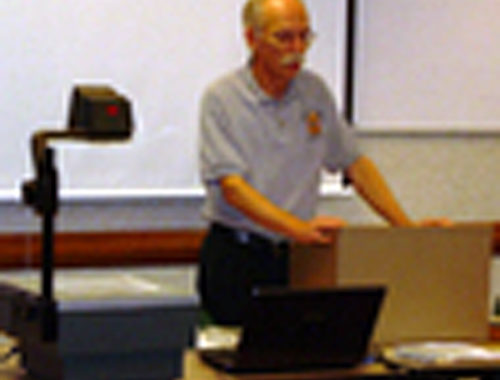The media’s use of the word “unarmed” in the high profile cases of police shootings as a catch phrase is simply inaccurate and enflames tragic incidents of police use of deadly force. It indicates that the suspect was not in possession of a firearm which, looking at two of the incidents, is simply wrong. In Baton Rouge, La., the suspect had a firearm in his right pocket and in the Minnesota incident, the suspect was also carrying a firearm.
In most of the other cases, the suspect was in possession of a weapon, albeit not a firearm. Put simply, when a rake ceases to be used for gardening it becomes a six prong metal weapon. When a brick ceases to be used to build a structure, it becomes a six pound block capable of inflicting serious injury or death. When a motor vehicle ceases to be a mode of transportation, it becomes a 3,500 pound weapon. When a ball point pen ceases to be used as a writing implement, it (when jammed into the eye, ear or throat) a deadly weapon.
The young man in the Chicago, Illinois case was carrying a knife. The actual question which needs to be asked (and answered) is whether he presented an actual threat to the officer or others and the dash camera does not answer that question.
In the Cincinnati, Ohio case, the body camera is moving during the incident and offers a down ward view of the vehicle driver from the officer’s chest. In the first trial of the officer, the prosecution enhanced the video and reduced it into milliseconds to demonstrate their point. The University of Cincinnati police officer experienced the incident in real time. In the shooting of the driver outside St. Paul, Minnesota streamed live on Facebook, the only thing actually shown is a young black male with two bullet holes in his chest. It does not show the actual shooting or the actions leading up to the firing of the shots. The South Carolina phone video clearly shows the incident in its entirety and, from what is shown, it was an unreasonable use of deadly force by the officer. In the Tulsa, Oklahoma shooting, there are two views of the incident. The first is a dash camera showing the incident from behind and does not show the movement of the driver of the car. The second, from a helicopter, has a clear view of the entirety of the scene until it moves to the opposite side of the vehicle prior to the actual shooting. The shooting is blocked by the broken down vehicle. Criminal charges should be based upon the investigation, not total reliance on a video and should be based upon a single question. Would a reasonable police officer, in a similar circumstance, believe that their life, or the life of another, in imminent danger?
A video offers a true and accurate depiction of exactly (and only) what the lens sees. It does not, as many believe, show the actual event. In television, the actors are on marks and the cameras are pre-set. If the take does not come out clean and neat, it is repeated. In the real world there are no re-takes and the camera is likely not fixed or properly positioned to see the entirety of the event.
Think about watching a professional football game on television. The quarterback throws a pass to the sideline. The receiver makes a circus catch. The sideline official, standing less than ten feet away, rules the pass incomplete because the receiver did not get both feet inbounds. The viewer will now see seven different camera angles of the play. Four of them are inconclusive, two more appear to show the receiver only got one foot inbounds. The seventh, enhanced by technology, shows the player’s other foot move grains of grass move before the player steps out of bounds and the call is reversed. Were the other six cameras wrong or did they simply show what the lens saw? More importantly, could the official have possibly seen the grass move with the naked eye?
Probably the best example is not a police shooting. FOX News anchor Shephard Smith has an obsession for police pursuits. After an hour long chase, the pursuit reaches its conclusion and the driver bails out of the car and runs into a clearing. The news helicopter captures the suspect put a gun to his head and then crumple to the ground. Mr. Smith spends the next five minutes of air time apologizing to his national audience because the video feed was not on the normal six second delay. He told viewers that they should have not been forced to watch reality.
The decision on whether or not a police shooting was justified or unjustified can usually be determined by the application of common sense. What did the video really show with respect to what actually happened? Can the viewer see the suspect’s hands? Lastly, was the camera angle the same as the angle of the officer?
- Barry Andrews spent twenty-one years as the Executive Director of Police Training Institute, Inc., a national non-profit advanced law enforcement training organization based in Cincinnati, Ohio. He is also a published author of fictional police novels.
